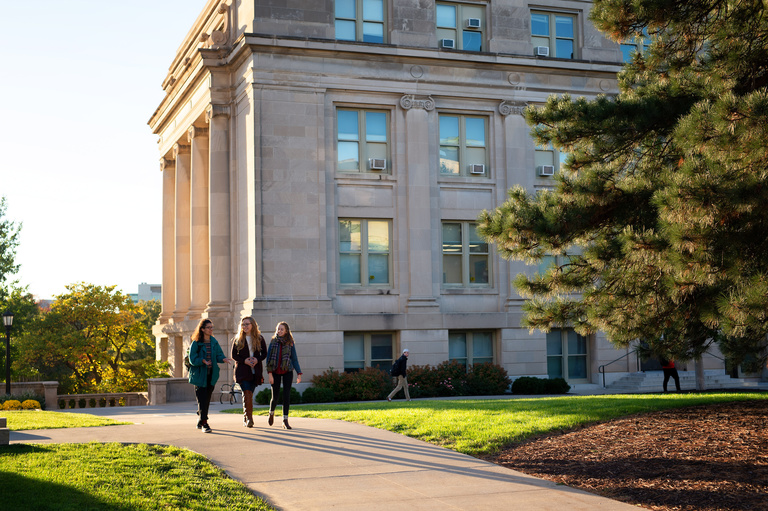
Pending approval from the Iowa Board of Regents, Iowa’s state universities are proposing tuition hikes for the 2025-2026 academic year. According to board documents released on Tuesday, undergraduate students at the University of Iowa and Iowa State University will see their base tuition increase by 3%, or $279 and $278; while students at University of […]
Already a subscriber? Log in
Want to Read More?
Get immediate, unlimited access to all subscriber content and much more.
Learn more in our subscriber FAQ.
- Unparalleled business coverage of the Iowa City / Cedar Rapids corridor.
- Immediate access to subscriber-only content on our website.
- 26 issues per year delivered digitally, in print or both.
- Support locally owned and operated journalism.
Do you want to read and share this article without a paywall?
Click here to purchase a paywall bypass linkPending approval from the Iowa Board of Regents, Iowa’s state universities are proposing tuition hikes for the 2025-2026 academic year.
According to board documents released on Tuesday, undergraduate students at the University of Iowa and Iowa State University will see their base tuition increase by 3%, or $279 and $278; while students at University of Iowa will see a 2.7% increase, or $228.
“Funding from the proposed tuition increases will help address growing financial challenges including inflationary cost increases, recruiting and retaining faculty and staff in national markets, health care, meeting collective bargaining terms, deferred maintenance needs in academic facilities, and student financial aid to provide higher education opportunities to more students,” board documents stated.
Different rates for higher-cost programs
The universities are also seeking differential tuition rates for higher-cost academic programs, aiming to keep program-specific expenses contained within those areas instead of spreading them across the entire student body. At the University of Iowa, students in the radiation sciences program would see a $703 increase in tuition. Board documents note this is the final year of a three-year phased increase intended to help the institutions reach a balanced budget. “The program is essential to SUI’s mission and the University of Iowa Hospitals and Clinics, as it provides healthcare personnel in the areas of diagnostic imaging and radiation therapy. There are critical shortages of these health care personnel,” board documents stated. Iowa State's Ivy College of Business is also in the final year of a three-year plan with the goal of bringing sophomore business majors' tuition in line with rates paid by juniors and seniors, and is proposing a tuition hike of $1,412 for applicable resident students and $2,644 for non-residents. “Sophomore business students have intensive hands-on or experiential components,” board documents stated, citing case-based learning, involvement in industry consulting projects and access to a growing number of programs, among other things. The University of Northern Iowa is proposing a new tuition rate for students from Iowa’s six neighboring states – Minnesota, Wisconsin, Illinois, Missouri, Nebraska and South Dakota. The plan would set rates slightly below the standard nonresident tuition, aiming to attract more students from the region. UI’s Carver College of Medicine is opting to keep the same rates for several of its graduate programs, including athletic training, clinical nutrition and nursing, as well as its physical therapy doctorate program. However, the college is recommending a 3% tuition hike for both resident and nonresident MD students – a change that would end a five-year tuition freeze, according to board documents. The physician assistant program is also seeking increases, with a proposed 4% hike for resident students and 3% for nonresidents. Veterinarian students at ISU would see a 3.5% increase for residents and 3% for non-residents. “The additional revenue will enable ISU to deliver state-of-the art learning experiences for veterinary students, and a positive working environment for faculty and staff; to maintain and upgrade diagnostic equipment, imaging equipment, and medical supplies, while incorporating new technological advances; and to support faculty as leaders in veterinary curriculum development and teaching,” board documents stated.Accounting for inflation
Board documents asserted that while it sets tuition rates prior to the allocation of funds, it takes inflation into account when deciding how much to raise tuition and fees. “The proposed tuition rates at all three universities combined are projected to generate $42 million in incremental revenue for FY 2026, approximately 2.4% of the current total general education fund operating budget,” board documents stated. Citing March data from the U.S. Labor Department’s Bureau of Labor Statistics, board documents noted that core inflation rose 3.1% over the 12-month period ending in February. Meanwhile, the Higher Education Price Index – a key benchmark tailored for colleges and universities – climbed 3.4% in fiscal year 2024, according to a December 2024 report from the Commonfund Institute.Mandatory fees also increase
Mandatory fees will also see an increase at all three universities: 3% for UI, or $60; 1.7% for ISU, or $26; and 2.7% for UNI, or $37. At the UI, these mandatory fees would encompass:- Technology: A 3% increase is proposed to help cover rising IT costs that support students.
- Health: A $4 increase would help offset higher expenses for medical supplies, pharmaceuticals, and healthcare personnel.
- Mental Health: The University Counseling Service is requesting a $12 increase to address staffing limitations and meet growing demand for mental health services.
- Student Activities: A $3 increase is requested by student government organizations to cover rising operational costs and boost funding for student programming.
- Student Services: A $4 increase would support the university’s Cambus transit system, including ongoing operations and bus fleet upgrades.
- Building: A $9 increase is proposed to help modernize student spaces and significantly reduce deferred maintenance needs in the main library.
- Recreation: A $10 increase is aimed at covering higher operational and programming costs for campus recreation services.